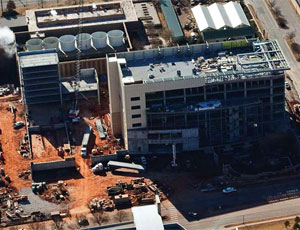Although 2009 was grim overall for the construction industry, not all numbers were negative. Several niche project categories saw significant increases in the four metropolitan statistical areas within Midwest Construction’s coverage: Milwaukee, St. Louis, Indianapolis and Chicago.

According to research compiled by McGraw-Hill Construction Analytics (which, like Midwest Construction, is part of the McGraw-Hill Cos.), the category faring the best was non-building construction, either by small increases or small decreases in start values. Some projects are part of large long-term infrastructure improvements that launched before the recession kicked in. Others were jump-started by stimulus from the American Recovery and Reinvestment Act. The non-building category includes highways, bridges, utilities and public works.
Residential construction dived everywhere. The greatest loss was Chicago, with a 43% decrease, from $3.4 billion in 2008 to $1.9 billion in 2009. St. Louis had the smallest drop at 24%, from $1.2 billion in 2008 to $936 million in 2009.
Non-residential starts were hit or miss, depending on market. The non-residential category includes commercial, institutional, education, healthcare and retail.
ST. LOUIS: St. Louis showed the lowest decreases among the four cities. Overall totals declined 25%, from $5.6 billion in 2008 to $4.2 billion in 2009. Non-building totals jumped 137%, from $510 million in 2008 to $1.2 billion in 2009. Non-residential construction was down 47%, from $3.8 billion in 2008 to $2 billion in 2009.
Subcategory gainers include dams, up 360%; rivers and harbors, up 239%; and dormitories, up 159%.
Among the current projects are a $2-billion expansion to the Wood River Refinery in Roxana, Ill., and a $4-billion coal-fired power plant at Prairie State Energy Campus in Marissa, Ill. The Missouri Department of Transportation is mid-way through its five-year, $1.1-billion Better Roads, Brighter Future program to improve 5,600 highway miles. Construction of the new $640-million Mississippi River Bridge will soon begin.
The once-stalled, $130-million St. Louis Art Museum expansion is now under way, and several public schools are putting bond issues on the ballot this year, reports Dennis Lavallee, president of the St. Louis Council of Construction Consumers.
“Those are the bright stars in the dark sky,” he says. “They will help. But we still see a lot of folks not working or between opportunities.”
INDIANAPOLIS: Indianapolis was down by half or more in every major category. The overall decrease was 49%, from $4.7 billion in 2008 to $2.4 billion in 2009. Non-building construction declined 46%, from $1.2 billion in 2008 to $662 million in 2009. Non-residential building declined 61%, from $2.24 billion in 2008 to $871 million in 2009.
Despite the overall trend, several subcategories showed triple-digit gains: government buildings up more than 200%; bridges and airports (excluding buildings) up more than 300%; religious buildings up 873%; and manufacturer-owned laboratories up 629%.
Terry Sweeney, vice president of real estate development for Indianapolis Downtown Inc., reports 83 $1-million-plus projects are scheduled between now...



Post a comment to this article
Report Abusive Comment